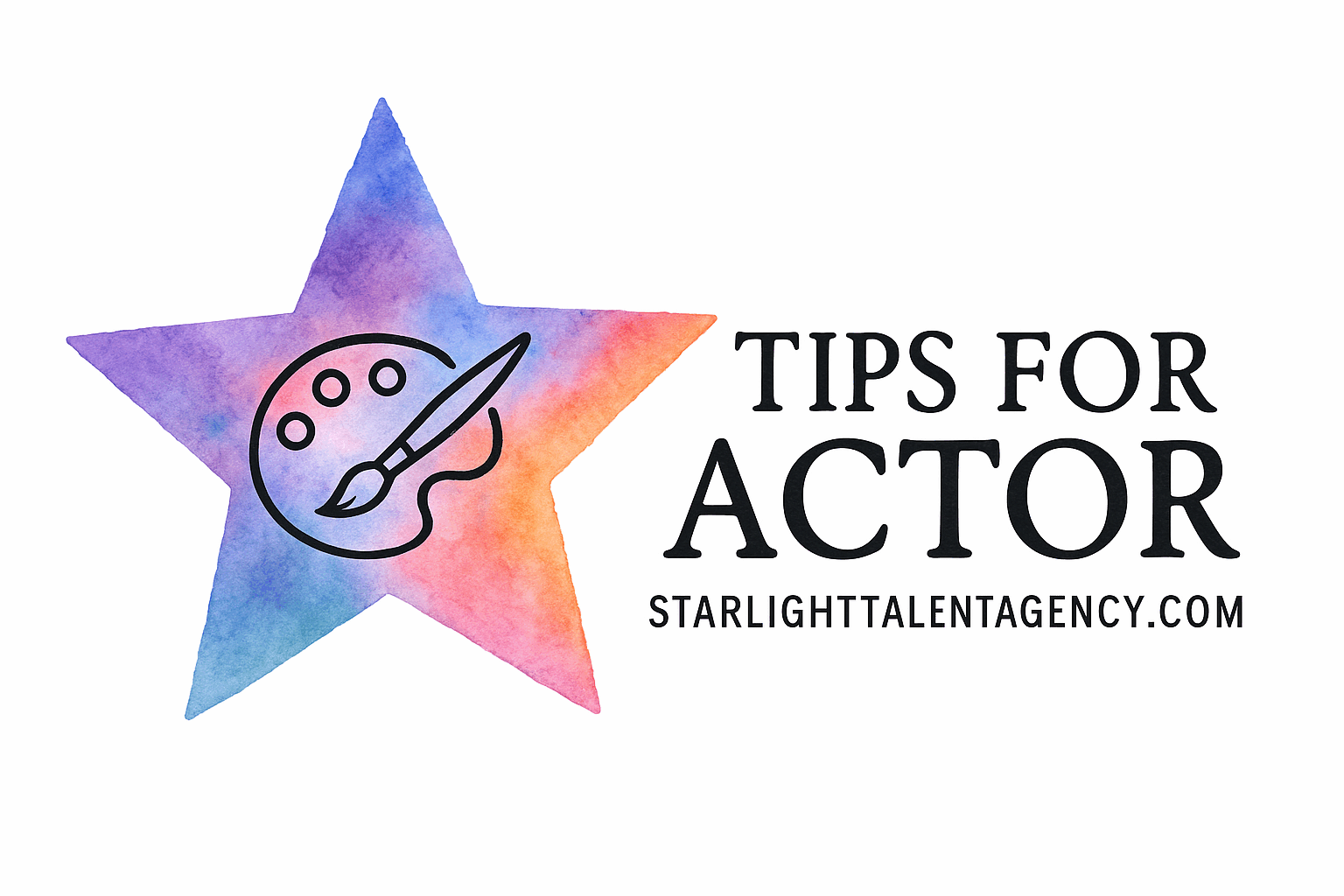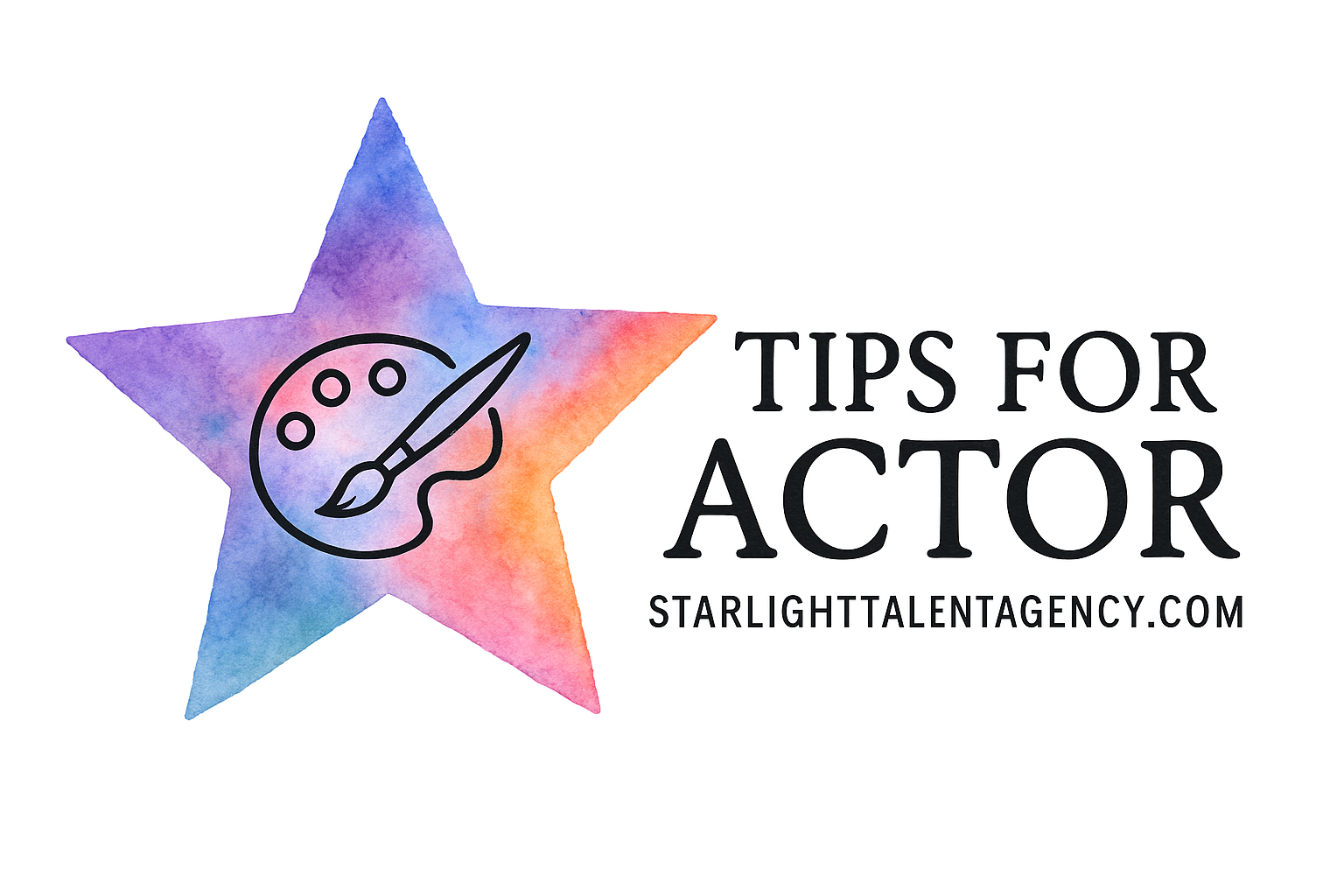If you’re an aspiring actor, your submission package is your first impression — your silent audition before you ever walk into the room. Casting directors see hundreds of submissions daily, and only the sharpest, most polished ones rise to the top. That’s where expert Coaching Tips for Actor Submission Formats can change your game.
Let’s explore how to build, refine, and present your materials like a pro with guidance inspired by Starlight Talent Agency.
Understanding Actor Submission Formats
Before diving into the techniques, let’s clarify what these formats include and why they’re so crucial.
Why Submission Formats Matter for Actors
Your submission materials — your resume, headshots, demo reels, and self-tapes — are your personal brand portfolio. They’re often the only thing a casting director sees before deciding whether to invite you in.
A strong submission tells a story: it showcases your professionalism, range, and readiness for the role.
Want to improve your presentation? Visit Audition Preparation Basics for essential prep tips that complement your submissions.
Common Types of Actor Submission Materials
The core elements every actor needs include:
- A high-quality headshot
- A detailed acting resume
- A demo reel or self-tape audition
- A brief introduction note or cover message
Each of these must align with your brand identity as an actor. That consistency creates instant trust with casting professionals.

Tip #1: Perfect Your Acting Resume
Your resume is more than a list — it’s your professional snapshot.
Crafting a Standout Acting Resume
Keep it simple, clean, and formatted for clarity. Start with your name, union status, contact info, and physical stats. Then, organize credits under sections like Film, TV, Theatre, and Commercials.
If you’re unsure how to showcase training and experience effectively, check out Acting Resume Tips for layout inspiration.
Highlighting Training, Roles, and Skills
List every class or workshop that adds credibility. Mention your acting coaches, dialect skills, and any physical or performance-based specialties. These can make the difference when a casting team looks for someone with specific talents like accents or stage combat — learn more about mastering these at Dialect Training.
Tip #2: Master the Self-Tape Submission
A strong self-tape can open doors to opportunities anywhere in the world.
Setting Up Your Space
Use a neutral wall, soft lighting, and a quiet environment. Keep the focus on you. Your setup doesn’t need to be expensive — just clean, consistent, and distraction-free.
For technical setup ideas, explore Self-Tape Setup and Self-Tape Mastery.
Recording Like a Pro
Frame yourself from the chest up, and always maintain clear eye lines. Speak naturally — authenticity beats overacting every time. Keep takes short and strong, and avoid heavy editing or filters.
Need more insight? Review Self-Tape Acting and Advanced Audition Skills to elevate your performance technique.
Tip #3: Nail Your Headshots
Your headshot is your calling card. It should look like you on your best day — approachable, professional, and true to your type.
Choosing the Right Photographer
Find a photographer who specializes in actor headshots. They’ll know how to capture the nuances casting directors notice: light, expression, and presence.
Learn more about crafting image-based branding with Acting Wardrobe Tips and Stage Presence.
Expressing Character Through Your Look
Have several looks that highlight your range — dramatic, comedic, or commercial. Each headshot should suggest a different character archetype.
Think of it as creating a visual acting reel in still form. Combine this with lessons from Character Development to embody each vibe authentically.
Tip #4: Tailor Each Submission for the Role
No two auditions are alike — and neither should your submissions be.
Researching the Casting Breakdown
Study the breakdown carefully. Identify the project’s tone, network, and creative team. This helps you choose the most relevant materials from your portfolio.
Get additional insights from Audition Preparation to fine-tune your approach.
Personalizing Your Submission Message
When including a cover note, personalize it. Reference something specific about the project or director’s past work. Keep it short, confident, and warm.
These thoughtful touches show professionalism — a key skill discussed at Career Growth Strategies.
Tip #5: Showcase Professionalism in Every Detail
Professionalism is more than punctuality — it’s the polish in every piece you send.
Submission Etiquette and Timing
Always follow submission guidelines exactly as written. Submit early when possible, and double-check attachments.
Want to stay organized? Learn about balancing your commitments at Work Balance.
File Naming and Format Consistency
Always label your files clearly:
Firstname_Lastname_Role_Project.mp4
This keeps casting directors happy (and saves them from a sea of “Final_Video2.mp4”).
Consistency builds your brand — from email style to filenames.
Tip #6: Seek Ongoing Coaching and Feedback
The best actors never stop learning.
Working with a Talent Coach
A coach helps refine your submissions and performance strategy. They’ll guide you through scene work, body language, and self-tape techniques.
Explore practical insights at Coaching Tips for Actor Development.
Learning from Rejections
Rejection isn’t failure — it’s feedback. Keep track of auditions, analyze patterns, and note what gets callbacks.
You can read more about mindset shifts at Career Mindset and Acting Confidence.
Bonus: Building a Strong Online Presence
Your digital footprint is now part of your audition.
Updating Acting Portfolios and Reels
Post new clips regularly, update your bios, and replace outdated images. Keep your reel under 90 seconds with clear storytelling moments.
You’ll find more guidance under Acting Prep and Scene Work.
Engaging with Casting Platforms
Join legitimate casting sites like Actors Access or Casting Networks. Keep your profile consistent with your agency materials.
And don’t forget to coordinate with your representation — agencies like Starlight Talent Agency ensure your submissions stay aligned with your brand.
Common Mistakes Actors Make in Submissions
Even experienced actors fall into traps that cost them opportunities.
Overediting and Overacting
Less is more. Natural lighting, grounded performance, and subtlety win every time. Overproduction distracts from your presence.
Brush up your natural acting flow with Expressive Acting Techniques.
Submitting Generic Materials
Never send the same materials to every project. Tailor your reel and message every time — it shows care and awareness.
Learn to adapt quickly using insights from Acting Flexibility.
The Role of a Talent Agency in Actor Submissions
A professional agency doesn’t just submit you — they shape your strategy.
How Agencies Like Starlight Talent Help
Starlight Talent Agency offers guidance for every step, from resume formatting to self-tape coaching. Their experts ensure your materials meet industry standards and target the right roles.
Explore their blog for expert resources on Audition Preparation Basics and Advanced Audition Skills.
Partnering for Long-Term Growth
An agency relationship is about more than booking jobs. It’s about crafting a career narrative — aligning roles with your goals, style, and strengths.
If you’re serious about long-term success, a team like Starlight can help you grow with purpose.
Conclusion
Your actor submission formats are your professional handshake — the bridge between opportunity and obscurity. By following these 6 Coaching Tips for Actor Submission Formats, you’ll create submissions that not only look great but feel authentic and confident.
Each detail — from your resume layout to your lighting setup — speaks volumes about your dedication. Invest the time, apply these strategies, and soon enough, you’ll be the one getting the callback.
FAQs
1. What exactly are actor submission formats?
They’re the materials (resume, headshots, reels, self-tapes) you send to casting directors and agencies to showcase your skills.
2. How often should I refresh my submission materials?
Every 6–12 months, or after any major change in your look or experience.
3. Should I use multiple headshots?
Yes! Show different character types — it highlights your range and adaptability.
4. How long should a self-tape audition be?
Usually between 1–2 minutes unless otherwise specified.
5. Can a coach really improve my submission quality?
Definitely. Visit Coaching Tips for Actor to see how coaching sharpens your presentation.
6. What file format is best for submissions?
Use standard formats — .MP4 for video, .JPEG for photos, and .PDF for resumes.
7. How can a talent agency boost my career?
Agencies like Starlight Talent Agency offer expert guidance, audition prep, and ongoing career management.

